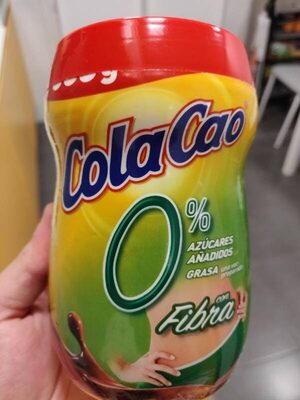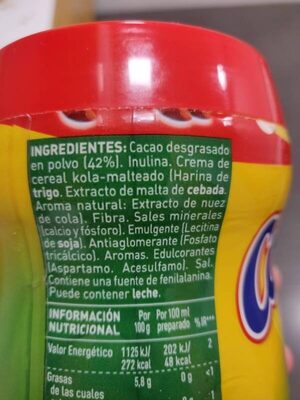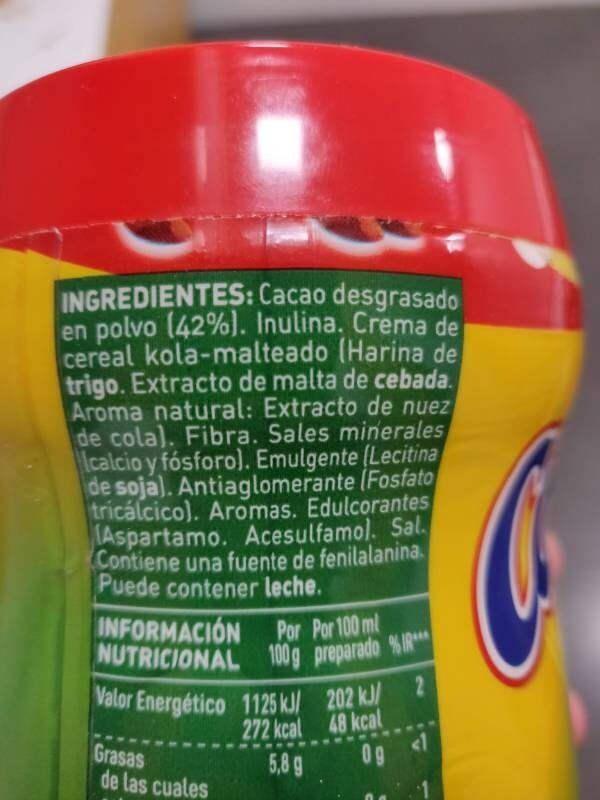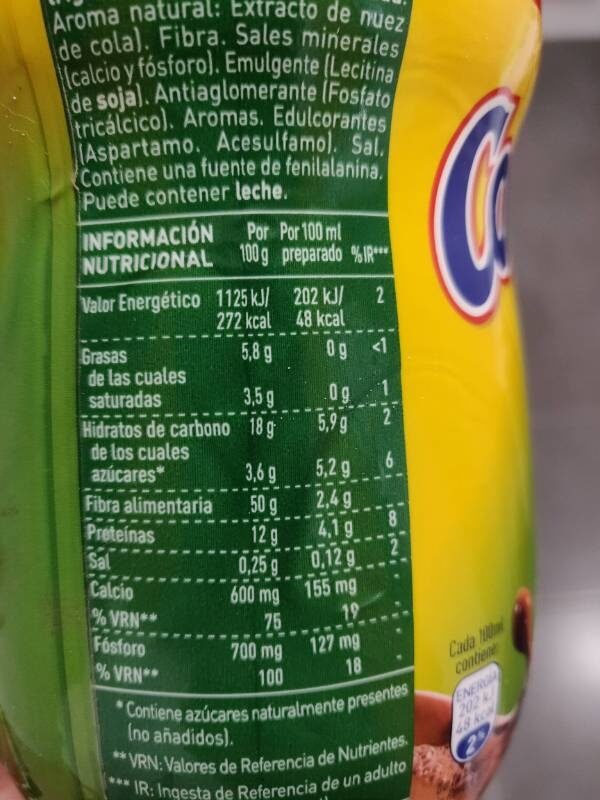Cola Cao 0% con fibra - 300 g
This product page is not complete. You can help to complete it by editing it and adding more data from the photos we have, or by taking more photos using the app for Android or iPhone/iPad. Thank you!
×
Barcode: 8410014326423 (EAN / EAN-13)
Quantity: 300 g
Packaging: es:Bote plastico
Brands: cola cao
Categories: Beverages, Breakfasts, Cocoa and its products, Cocoa and chocolate powders, Instant beverages, Cocoa powders, Chocolate powders
Labels, certifications, awards: Contains a source of phenylalanine
Countries where sold: Spain
Matching with your preferences
Environment
Carbon footprint
Packaging
Transportation
Report a problem
Data sources
Product added on by elcoco
Last edit of product page on by packbot.
Product page also edited by elcoco.d853b697b52e1321056a4dba49e8af09, hogazilla96, irune5, musarana, thaialagata.
If the data is incomplete or incorrect, you can complete or correct it by editing this page.








